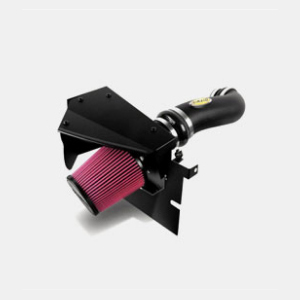-
 Afrikaans
Afrikaans -
 Albanian
Albanian -
 Amharic
Amharic -
 Arabic
Arabic -
 Armenian
Armenian -
 Azerbaijani
Azerbaijani -
 Basque
Basque -
 Belarusian
Belarusian -
 Bengali
Bengali -
 Bosnian
Bosnian -
 Bulgarian
Bulgarian -
 Catalan
Catalan -
 Cebuano
Cebuano -
 China
China -
 Corsican
Corsican -
 Croatian
Croatian -
 Czech
Czech -
 Danish
Danish -
 Dutch
Dutch -
 English
English -
 Esperanto
Esperanto -
 Estonian
Estonian -
 Finnish
Finnish -
 French
French -
 Frisian
Frisian -
 Galician
Galician -
 Georgian
Georgian -
 German
German -
 Greek
Greek -
 Gujarati
Gujarati -
 Haitian Creole
Haitian Creole -
 hausa
hausa -
 hawaiian
hawaiian -
 Hebrew
Hebrew -
 Hindi
Hindi -
 Miao
Miao -
 Hungarian
Hungarian -
 Icelandic
Icelandic -
 igbo
igbo -
 Indonesian
Indonesian -
 irish
irish -
 Italian
Italian -
 Japanese
Japanese -
 Javanese
Javanese -
 Kannada
Kannada -
 kazakh
kazakh -
 Khmer
Khmer -
 Rwandese
Rwandese -
 Korean
Korean -
 Kurdish
Kurdish -
 Kyrgyz
Kyrgyz -
 Lao
Lao -
 Latin
Latin -
 Latvian
Latvian -
 Lithuanian
Lithuanian -
 Luxembourgish
Luxembourgish -
 Macedonian
Macedonian -
 Malgashi
Malgashi -
 Malay
Malay -
 Malayalam
Malayalam -
 Maltese
Maltese -
 Maori
Maori -
 Marathi
Marathi -
 Mongolian
Mongolian -
 Myanmar
Myanmar -
 Nepali
Nepali -
 Norwegian
Norwegian -
 Norwegian
Norwegian -
 Occitan
Occitan -
 Pashto
Pashto -
 Persian
Persian -
 Polish
Polish -
 Portuguese
Portuguese -
 Punjabi
Punjabi -
 Romanian
Romanian -
 Russian
Russian -
 Samoan
Samoan -
 Scottish Gaelic
Scottish Gaelic -
 Serbian
Serbian -
 Sesotho
Sesotho -
 Shona
Shona -
 Sindhi
Sindhi -
 Sinhala
Sinhala -
 Slovak
Slovak -
 Slovenian
Slovenian -
 Somali
Somali -
 Spanish
Spanish -
 Sundanese
Sundanese -
 Swahili
Swahili -
 Swedish
Swedish -
 Tagalog
Tagalog -
 Tajik
Tajik -
 Tamil
Tamil -
 Tatar
Tatar -
 Telugu
Telugu -
 Thai
Thai -
 Turkish
Turkish -
 Turkmen
Turkmen -
 Ukrainian
Ukrainian -
 Urdu
Urdu -
 Uighur
Uighur -
 Uzbek
Uzbek -
 Vietnamese
Vietnamese -
 Welsh
Welsh -
 Bantu
Bantu -
 Yiddish
Yiddish -
 Yoruba
Yoruba -
 Zulu
Zulu
Feb . 18, 2025 03:44
Back to list
stainless steel wire & mesh
Stainless steel wire and mesh have become indispensable materials in a wide range of industries due to their remarkable properties and versatility. These materials are often the backbone in sectors such as construction, automotive, and even art installations. What sets stainless steel wire and mesh apart is their combination of strength, durability, and resistance to corrosion, making them ideal for both practical and aesthetic applications.
From an expertise standpoint, understanding the grades and specifications of stainless steel wire and mesh is crucial. Different applications require different types of stainless steel. For instance, type 316 stainless steel contains molybdenum, enhancing its corrosion resistance, making it preferable in marine environments. Conversely, type 304 is commonly used for applications where corrosion is less of a concern. Selecting the right type of stainless steel for a specific application involves assessing environmental conditions, mechanical stress, and required aesthetics. Consulting with material scientists and industry experts can provide invaluable insights into which stainless steel variant will provide the best performance and durability for a given project. Trustworthiness and authoritativeness in the stainless steel wire and mesh market come from sourcing materials from reputable suppliers who adhere to industry standards and certifications. Many companies offer testing and traceability for their products, ensuring that customers receive high-quality materials that meet stringent safety and quality benchmarks. In conclusion, the adoption of stainless steel wire and mesh continues to grow across various sectors due to their exceptional properties and adaptability. Their importance in ensuring safety, promoting innovation, and enhancing aesthetic appeal underscores their value in both industrial and creative applications. Companies and individuals looking to utilize stainless steel wire and mesh should prioritize understanding the material's diverse capabilities and consult with industry professionals to make informed decisions that align with their specific needs, ensuring solutions that are both effective and reliable.


From an expertise standpoint, understanding the grades and specifications of stainless steel wire and mesh is crucial. Different applications require different types of stainless steel. For instance, type 316 stainless steel contains molybdenum, enhancing its corrosion resistance, making it preferable in marine environments. Conversely, type 304 is commonly used for applications where corrosion is less of a concern. Selecting the right type of stainless steel for a specific application involves assessing environmental conditions, mechanical stress, and required aesthetics. Consulting with material scientists and industry experts can provide invaluable insights into which stainless steel variant will provide the best performance and durability for a given project. Trustworthiness and authoritativeness in the stainless steel wire and mesh market come from sourcing materials from reputable suppliers who adhere to industry standards and certifications. Many companies offer testing and traceability for their products, ensuring that customers receive high-quality materials that meet stringent safety and quality benchmarks. In conclusion, the adoption of stainless steel wire and mesh continues to grow across various sectors due to their exceptional properties and adaptability. Their importance in ensuring safety, promoting innovation, and enhancing aesthetic appeal underscores their value in both industrial and creative applications. Companies and individuals looking to utilize stainless steel wire and mesh should prioritize understanding the material's diverse capabilities and consult with industry professionals to make informed decisions that align with their specific needs, ensuring solutions that are both effective and reliable.
Latest news
-
Shipping Plastic Bags for Every NeedNewsJul.24,2025
-
Safety Netting: Your Shield in ConstructionNewsJul.24,2025
-
Plastic Mesh Netting for Everyday UseNewsJul.24,2025
-
Nylon Netting for Every UseNewsJul.24,2025
-
Mesh Breeder Box for Fish TanksNewsJul.24,2025
-
Expanded Steel Mesh Offers Durable VersatilityNewsJul.24,2025











